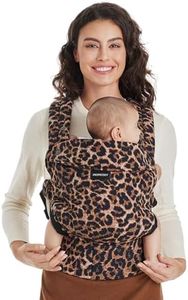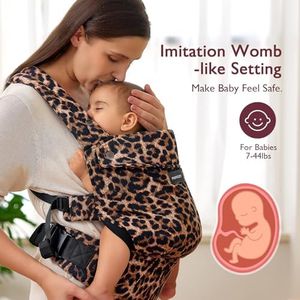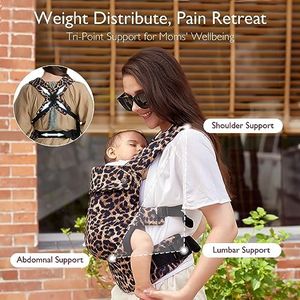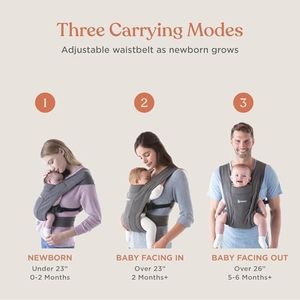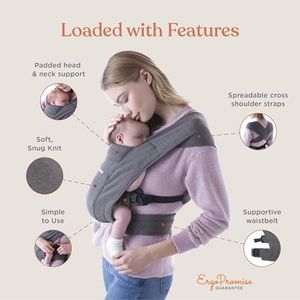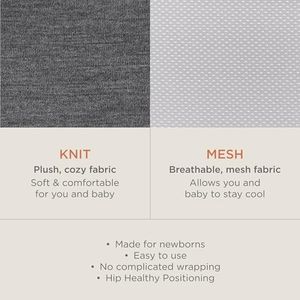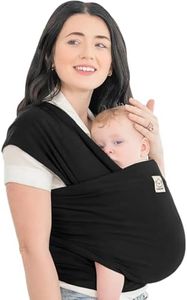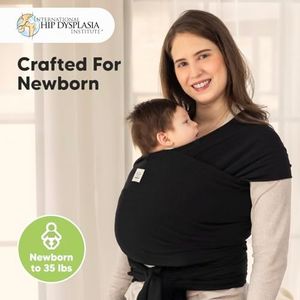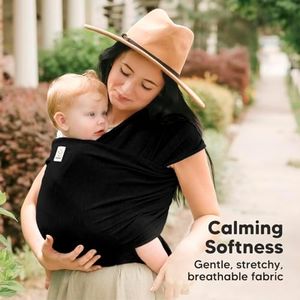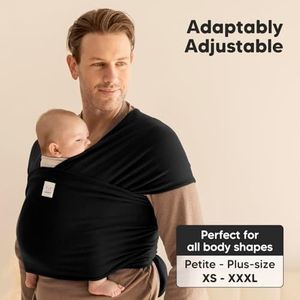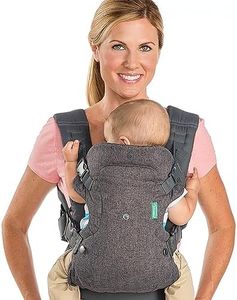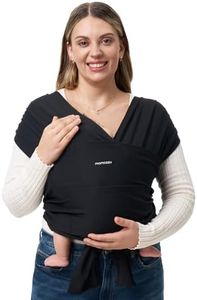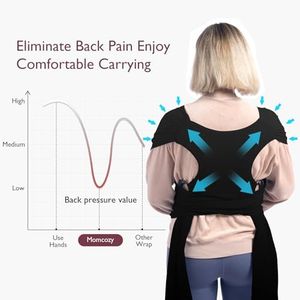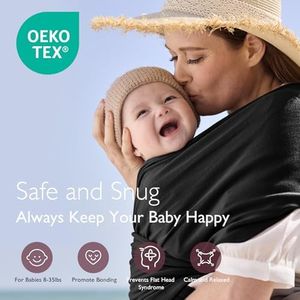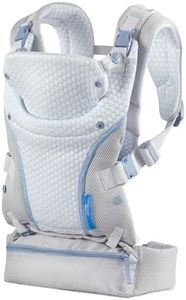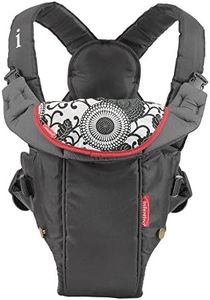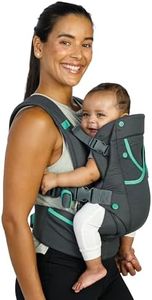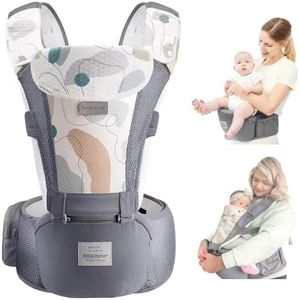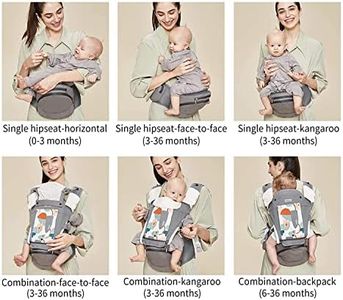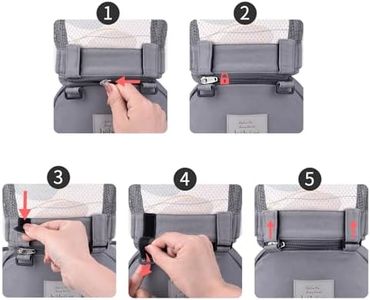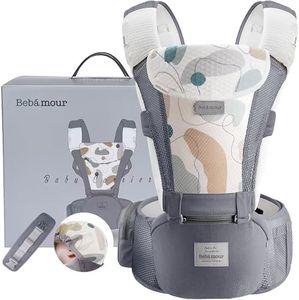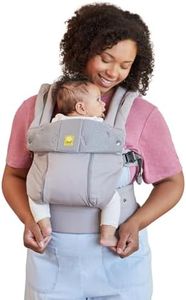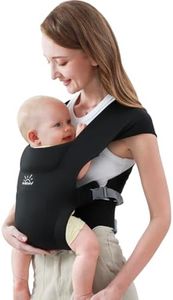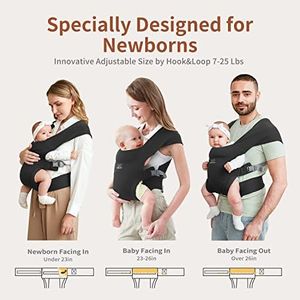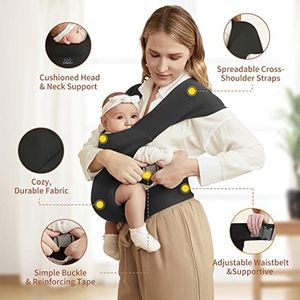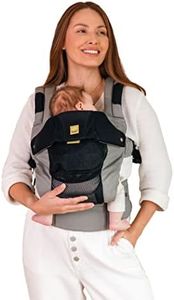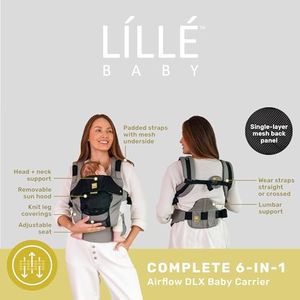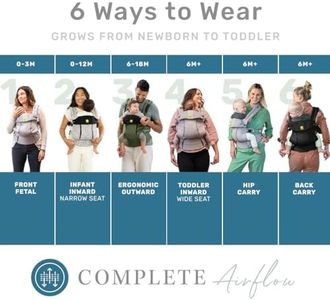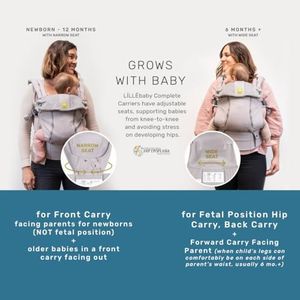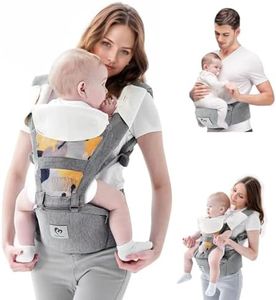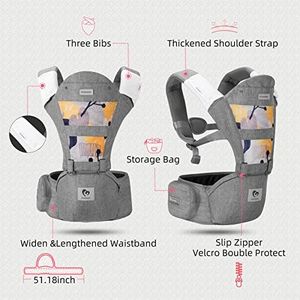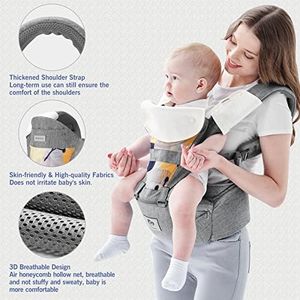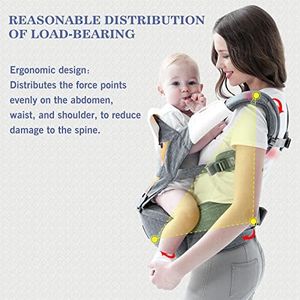We Use CookiesWe use cookies to enhance the security, performance,
functionality and for analytical and promotional activities. By continuing to browse this site you
are agreeing to our privacy policy
10 Best Baby Carriers
From leading brands and best sellers available on the web.Top 10 Best Baby Carriers 2025 in Canada
#1
Winner
Momcozy Baby Carrier Newborn to Toddler - Ergonomic, Cozy and Lightweight Infant Carrier for 7-44lbs, Effortless to Put On, Ideal for Hands-Free Parenting, Enhanced Lumbar Support, Leopard
Momcozy Baby Carrier Newborn to Toddler - Ergonomic, Cozy and Lightweight Infant Carrier for 7-44lbs, Effortless to Put On, Ideal for Hands-Free Parenting, Enhanced Lumbar Support, Leopard
Carrier Type: Baby Carrier
Weight and Age Range: 7-44 lbs, 3-24 months
Carrying Positions: Three positions, front-facing only
Adjustability and Fit: Buckle closures, adjustable straps, X-back
Support and Padding: Padded straps, built-in EVA lumbar
Ease of Use and Cleaning: Easy to wear, machine washable
Breathability and Material: 100% cotton, breathable, soft
Chosen by 1183 this week
Ergobaby Embrace Cozy Newborn Baby Wrap Carrier (7-25 Pounds), Ponte Knit, Pure Black
Ergobaby Embrace Cozy Newborn Baby Wrap Carrier (7-25 Pounds), Ponte Knit, Pure Black
Carrier Type: Wrap Carrier
Weight and Age Range: 7 to 25 lbs, Newborn
Carrying Positions: Front
Adjustability and Fit: Adjustable cross straps, supportive waistbelt
Support and Padding: Supportive waistbelt, gentle padding
Ease of Use and Cleaning: Machine Wash
Breathability and Material: Ponte knit, 79% Polyester, 17% Rayon
KeaBabies Baby Wrap Carrier - All in 1 Original Breathable Baby Sling, Lightweight,Hands Free Baby Carrier Sling, Baby Carrier Wrap, Baby Carriers for Newborn, Infant, Baby Wraps Carrier, Baby Slings (Trendy Black)
KeaBabies Baby Wrap Carrier - All in 1 Original Breathable Baby Sling, Lightweight,Hands Free Baby Carrier Sling, Baby Carrier Wrap, Baby Carriers for Newborn, Infant, Baby Wraps Carrier, Baby Slings (Trendy Black)
Carrier Type: Baby Wrap Carrier
Weight and Age Range: Newborns up to 15.8 kg
Carrying Positions: Front only
Adjustability and Fit: Tie closure; no constant adjustments
Support and Padding: Ergonomic; supports hips, back, shoulders
Ease of Use and Cleaning: Machine washable; tie-style needs practice
Breathability and Material: Breathable proprietary fabric
Infantino Flip Advanced 4-in-1 Carrier - Ergonomic, Convertible, Face-in and Face-out, Front and Back Carry-on for Newborns and Older Babies 8-32 lbs, Gray
Infantino Flip Advanced 4-in-1 Carrier - Ergonomic, Convertible, Face-in and Face-out, Front and Back Carry-on for Newborns and Older Babies 8-32 lbs, Gray
Carrier Type: Flip 4-in-1 Carrier
Weight and Age Range: 8 to 32 Pounds, Infant
Carrying Positions: 4 positions, front and back carry
Adjustability and Fit: Adjustable shoulder straps, waist belt
Ease of Use and Cleaning: Machine Wash
Breathability and Material: Cotton
Momcozy Baby Wrap Carrier Slings, Infant Carrier Slings for Newborn up to 50 lbs, Baby Wrap Adjustable for Adult Fits Sizes XXS-XXL, Easy to Wear Baby Carriers, Ergonomic Front Facing/Back, Black
Momcozy Baby Wrap Carrier Slings, Infant Carrier Slings for Newborn up to 50 lbs, Baby Wrap Adjustable for Adult Fits Sizes XXS-XXL, Easy to Wear Baby Carriers, Ergonomic Front Facing/Back, Black
Carrier Type: Wrap-style sling
Weight and Age Range: 8-35 lbs, newborn
Carrying Positions: Front-facing
Adjustability and Fit: Fits adult XXS to XXL, adjustable
Support and Padding: Ergonomic for hip and spine health
Ease of Use and Cleaning: Machine wash, needs practice to tie
Breathability and Material: 95% polyester, 5% spandex, breathable
Bebamour Mesh Newborn Baby Carrier Front and Back Carry Baby Newborns to Toddler Baby Hip Carrier with Head Hood & 3 Pieces Teething Pads& Waist Extenders & Storage Bag (Mesh Grey)
Bebamour Mesh Newborn Baby Carrier Front and Back Carry Baby Newborns to Toddler Baby Hip Carrier with Head Hood & 3 Pieces Teething Pads& Waist Extenders & Storage Bag (Mesh Grey)
Weight and Age Range: Newborn to toddler up to 14.5 kg
Carrying Positions: Six positions: front, back, hip, horizontal
Adjustability and Fit: Waist belt 65-118 cm; padded straps
Support and Padding: Built-in hipseat; padded shoulder, waist straps
Ease of Use and Cleaning: Machine washable; removable bibs, storage bag
Breathability and Material: Breathable cotton with mesh parts
#10
Buying Guide for the Best Baby Carriers
Choosing a baby carrier is an important decision for parents and caregivers, as it directly affects both your comfort and your baby's safety and well-being. The right carrier can make outings easier, help with bonding, and even allow you to get things done around the house while keeping your baby close. When shopping for a baby carrier, it's important to consider how, where, and for how long you plan to use it, as well as your baby's age and size. Understanding the key features will help you find a carrier that fits your lifestyle and keeps both you and your baby comfortable.Carrier TypeCarrier type refers to the overall design and structure of the baby carrier, such as wraps, slings, soft-structured carriers, and backpack carriers. Each type offers different levels of support, ease of use, and versatility. Wraps and slings are often more flexible and can be adjusted to fit different body types, making them great for newborns and close contact. Soft-structured carriers usually have buckles and padded straps, providing more support and are easier to put on and take off, which is helpful for older babies or longer outings. Backpack carriers are designed for older babies and toddlers, especially for outdoor activities. To pick the right type, think about your daily routine, your baby's age, and how much adjustability or structure you prefer.
Weight and Age RangeThis specification tells you the minimum and maximum weight or age the carrier is designed to safely support. It's important because using a carrier outside its recommended range can be unsafe for your baby and uncomfortable for you. Carriers for newborns often have special inserts or adjustments, while those for older babies and toddlers are built to handle more weight. When choosing, check your baby's current weight and age, and consider how long you want to use the carrier as your child grows.
Carrying PositionsCarrying positions refer to the different ways you can wear your baby in the carrier, such as front-facing in, front-facing out, hip carry, or back carry. This is important because as your baby grows, their needs and preferences change. Newborns usually need to face inward for neck support and bonding, while older babies may enjoy facing out to explore the world. Some carriers offer multiple positions, giving you flexibility as your baby develops. Think about which positions you’ll use most often and choose a carrier that supports those.
Adjustability and FitAdjustability refers to how well the carrier can be customized to fit different body sizes and shapes, both for the wearer and the baby. This is important for comfort and safety, especially if more than one person will use the carrier. Features like adjustable straps, waistbands, and seat widths help ensure a snug, ergonomic fit. If you and your partner are different sizes, or if you want the carrier to grow with your baby, look for models with lots of adjustability.
Support and PaddingSupport and padding describe how much cushioning and structure the carrier provides, especially in the shoulder straps, waistband, and the area supporting the baby's legs and back. Good support helps distribute your baby's weight evenly, reducing strain on your back and shoulders. Padding adds comfort for both you and your baby, especially during longer periods of use. If you plan to wear the carrier for extended times or have a heavier baby, prioritize carriers with ample support and padding.
Ease of Use and CleaningEase of use covers how simple it is to put on, adjust, and take off the carrier, as well as how easy it is to get your baby in and out. Some carriers have more buckles or wraps, which can take practice to master. Cleaning is also important, as babies can be messy. Look for carriers that are machine washable or have removable, washable parts. If you want something quick and convenient, choose a carrier known for easy setup and maintenance.
Breathability and MaterialBreathability and material refer to the fabric used in the carrier and how well it allows air to flow. This is important for keeping both you and your baby comfortable, especially in warm weather or during active use. Some carriers use lightweight, mesh fabrics for better airflow, while others use thicker, cozier materials for cooler climates. Consider your local weather and how active you’ll be when choosing the right material for your needs.
